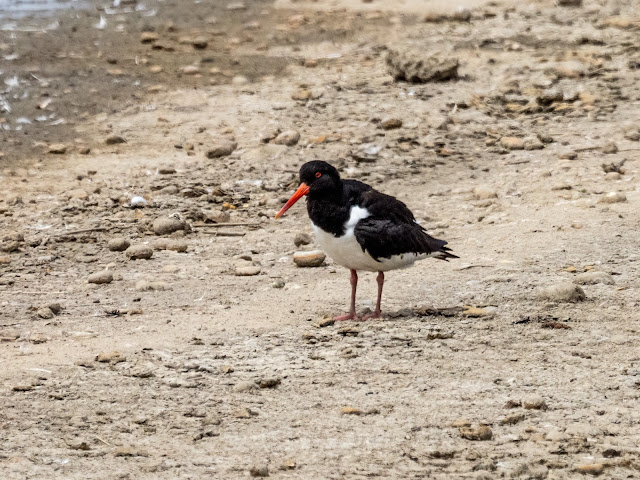On 25th June 2022, I visited RSPB Minsmere in Suffolk.
RSPB Minsmere is one of the oldest reserves owned and managed by the RSPB and it is designated as a Site of Special Scientific Interest, a Special Area of Conservation, a Special Protection Area and a Ramsar site. It is also 1 of only 5 European Council Diploma Protected Areas in the UK. Habitats at RSPB Minsmere include reedbeds, marshland, scrapes, grassland, heathland and shingle beach and a huge number and diversity of species is present at any time of the year.
The highlights, amongst 50 species recorded during my visit, were as follows (heard only records in italics): Avocet (c.100), Black-tailed Godwit (7), Green Sandpiper (1), Common Sandpiper (1), Spotted Redshank (1), Common Redshank (4), Ringed Plover (2), Turnstone (1), Ruff (1), Oystercatcher (7), Shelduck (c.50 including 1 pair with 15 ducklings), Mallard (c.10), Gadwall (c.10), Teal (c.30), Shoveler (2), Canada Goose (c.15), Greylag Goose (4), Barnacle Goose (feral flock of c.10), Coot (5), Moorhen (5), Cormorant (12), Mediterranean Gull (6), Kittiwake (c.20), Lesser Black-backed Gull (1), Black-headed Gull (+++), Little Tern (2), Sandwich Tern (c.50), Common Tern (c.200), Grey Heron (1), Little Egret (3), Sand Martin (100+), Blackcap (1 singing male plus another heard), Chiffchaff (2 singing males heard), Reed Warbler (1 plus at least 2 other singing males heard), Reed Bunting (1 singing male), Cetti’s Warbler (1 singing male), Marsh Harrier (2), Hobby (2), Stonechat (1 male), Linnet (1), Skylark (1 singing male), Meadow Pipit (1)
Additions to my 2022 year list: Spotted Redshank, Little Tern
In addition, I also recorded 3 species of butterflies and moths: Small Tortoiseshell, Emperor Moth (caterpillar)
.... and 3 species of dragonflies and damselflies: Emperor Dragonfly, Broad-bodied Chaser, Four-spotted Chaser
Sadly, my trip to RSPB Minsmere this time provided ample evidence of the avian flu epidemic which is having a devastating impact throughout most of the country. There were at least 20 dead birds, mostly gulls I think, visible on the main scrape.
RSPB Minsmere is a brilliant site for birds of a wide variety of species but, in my view, it is not the best for photography due to the distances involved. However, I did manage to get some photos ....
Photo: Avocet
Photo: Black-tailed Godwit
Photo: Black-tailed Godwit
Photo: Black-tailed Godwit
Photo: Oystercatcher
Photo: Oystercatcher
Photo: Lapwing
Photo: Shelduck
Photo: Shelduck
Photo: Common Tern
Photo: Common Tern
Photo: Common Tern
Photo: Common Tern
Photo: Black-headed Gull
Photo: Black-headed Gull
Photo: Black-headed Gull
Photo: Black-headed Gull
Photo: Black-headed Gull
Photo: Black-headed Gull
Photo: Black-headed Gull
Photo: Emperor Moth caterpillar
After spending several hours at RSPB Minsmere, I drove 70 miles north west to Morston on the north Norfolk coast.
I had planned on taking a boat trip from Morston Quay in Norfolk to see and photograph the Common Seal and Atlantic Grey Seal breeding colonies at Blakeney Point. However, despite it being a dry and sunny day, it was also very windy so I aborted this plan but still had a pre-booked overnight stay at Scaldbeck Cottage campsite immediately adjacent to Morston Quay.
Scaldbeck Cottage campsite is a very small and very quiet tents only campsite surrounded by countryside.
I spent the last 2 hours before it went dark at Kelling Heath located between Holt and Weybourne. I had not visited before but it is a well known site for Nightjar which was my target species.
As I approached the car park, there were 2 Reeves’ Muntjac feeding at the side of the road. Whilst it was still light, I saw a male Stonechat and heard a singing male Yellowhammer and 2 singing male Blackcaps.
At 9:30 p.m., I heard the first “churring” male Nightjar followed by the distinctive flight call. I was therefore in a suitable location. At 9:45 p.m., I had an amazing close view of a Nightjar as it flew past followed by another briefer sighting at 9:55 p.m. I had heard a “churring” male Nightjar in Wareham Forest in Dorset on 14th May 2022 (see here) but this was my first sighting of the year and amongst my best sightings ever.
💚🦆 🦉🦋🐝🦊🦡🌼 🌳💚
Stay safe, stay well, stay strong, stay connected with nature































No comments:
Post a Comment
If you feel like commenting on my blog, you can contact me by completing the comment form below. I will respond to all comments and enquiries and constructive criticism will always be welcomed.